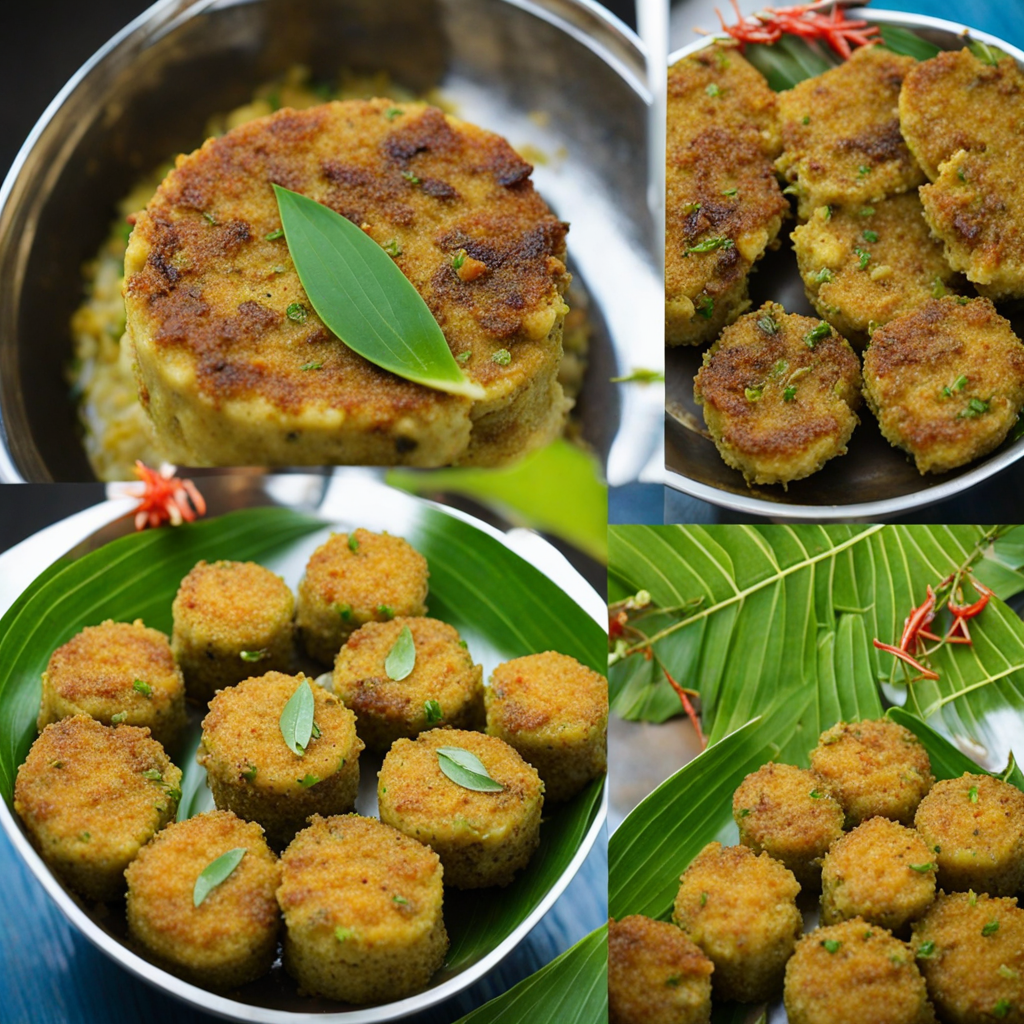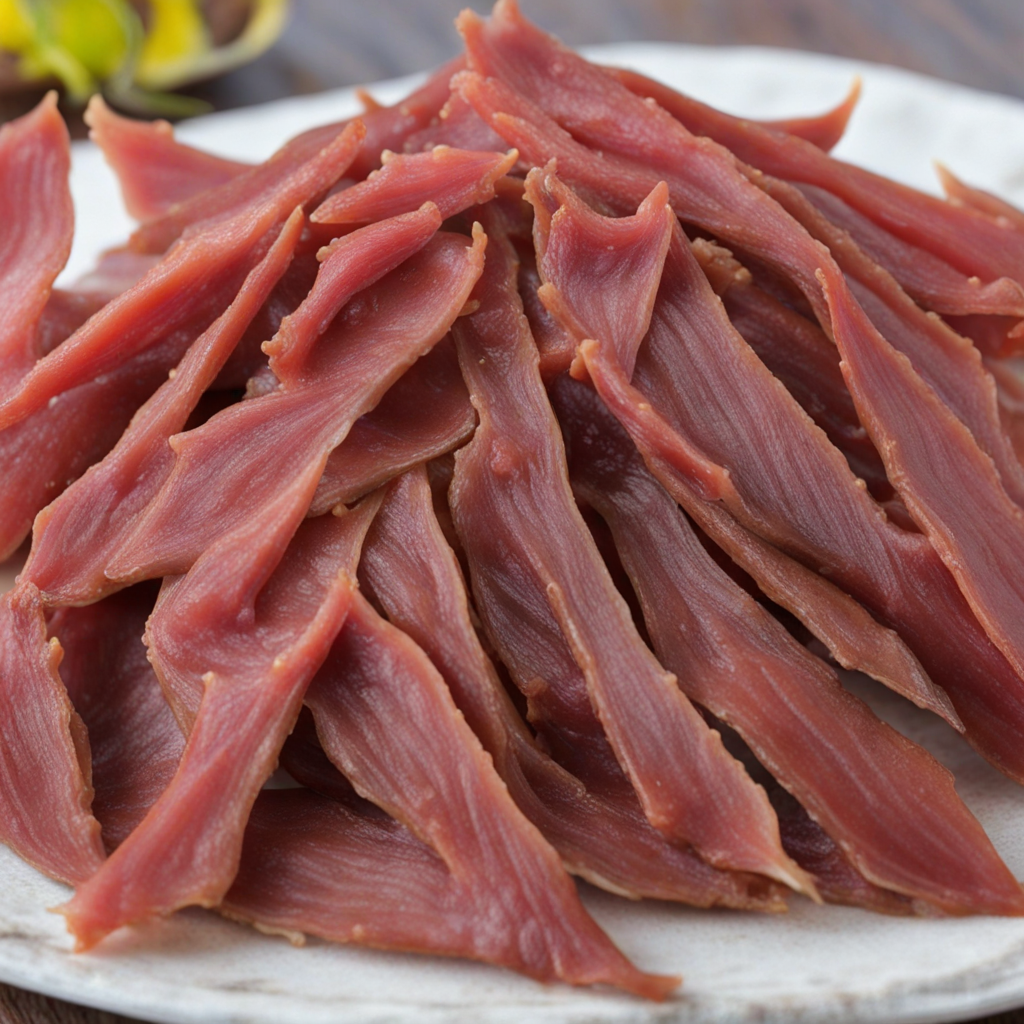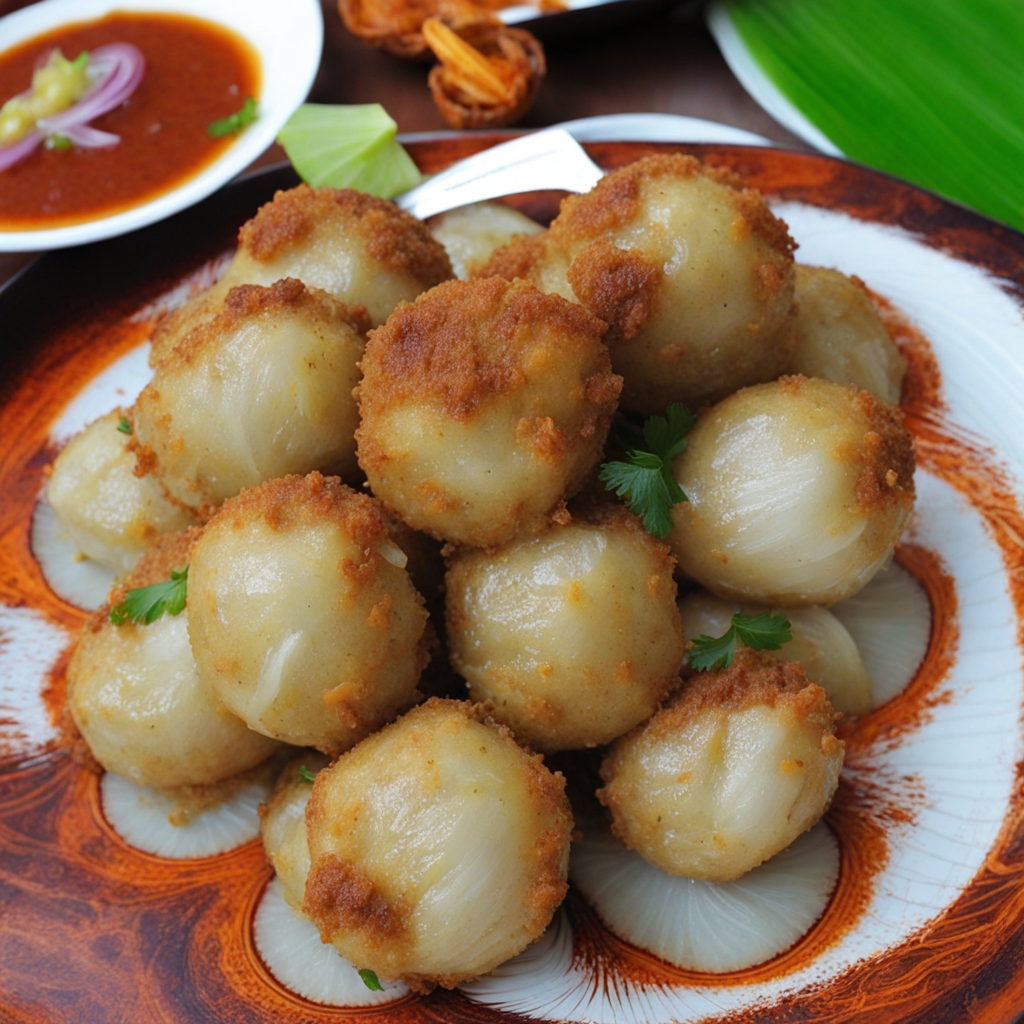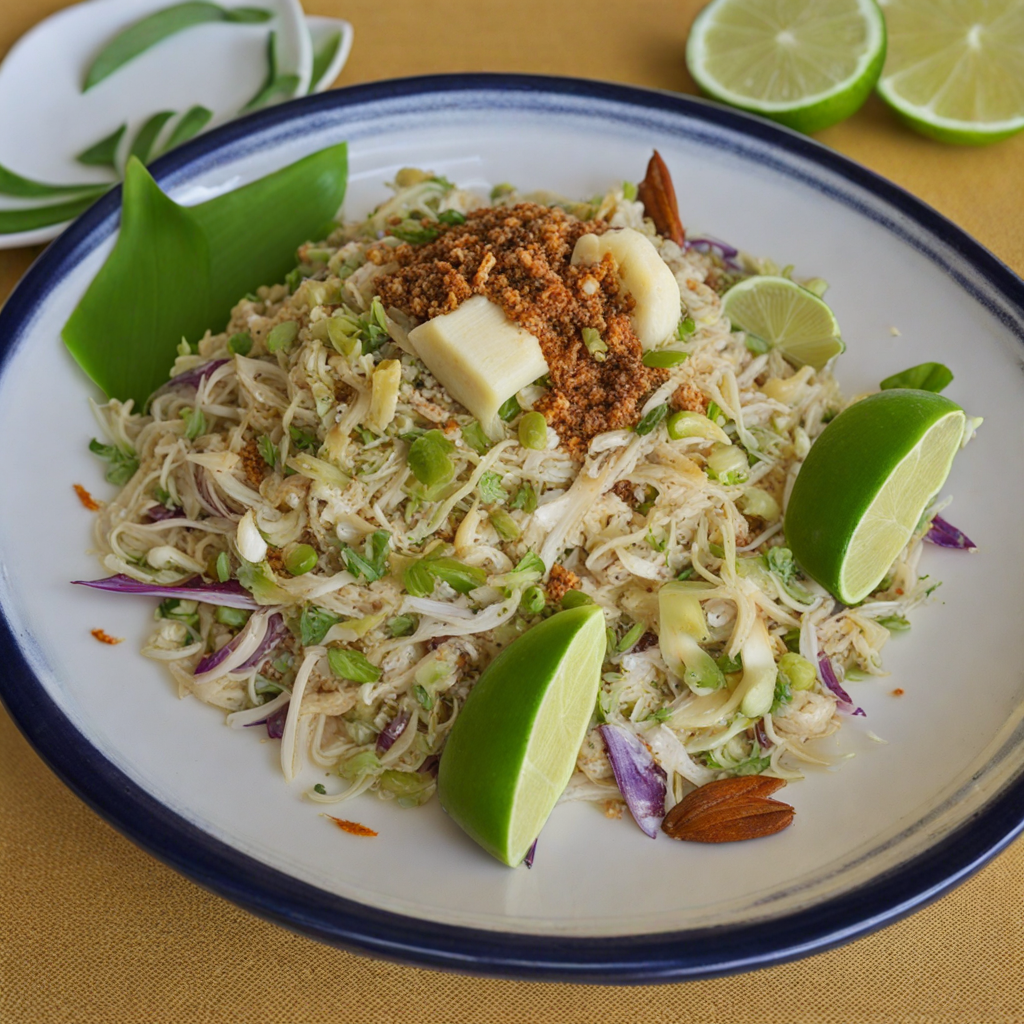Mas Huni
Mas Huni is a traditional Maldivian dish that beautifully combines flavors and textures, creating a delightful culinary experience. At its core, the dish features finely chopped tuna, which is often freshly caught and gives the dish a delightful umami taste. The tuna is mixed with freshly grated coconut, providing a rich, creamy texture that complements the fish perfectly. Alongside these main ingredients, you’ll find chopped onions, green chilies, and a sprinkle of lime juice, which adds a zesty brightness and balances the dish's richness, making each bite a refreshing delight. What sets Mas Huni apart is not just its ingredients but also its versatility. Traditionally enjoyed for breakfast, it is often served with flatbread known as 'roshi' or 'chapati', making it a hearty meal to start the day. The combination of the creamy tuna and coconut with the warm, soft bread creates a satisfying contrast. Diners can also customize their experience with various accompaniments, such as sliced cucumbers or tomato, which enhance the dish's freshness and offer a crunchy texture. In the Maldives, Mas Huni is more than just food; it's a cultural staple that brings people together. The dish reflects the local lifestyle, emphasizing the use of fresh, locally-sourced ingredients and simple preparation methods. Whether enjoyed in a bustling café or at a family gathering, Mas Huni captures the essence of Maldivian cuisine, offering a unique blend of flavors that will leave a lasting impression on anyone eager to explore new culinary horizons.
How It Became This Dish
The Culinary Journey of މަސް ހުނި (Mas Huni) in the Maldives #### Origins Mas Huni, a traditional Maldivian dish, is a beloved staple that represents the heart and soul of Maldivian cuisine. The name itself translates to “fish and coconut,” showcasing its primary ingredients: tuna and grated coconut. The dish has its roots in the fishing culture of the Maldives, an archipelago of 1,192 coral islands in the Indian Ocean. Given that the Maldives is surrounded by some of the world’s richest fishing grounds, it is no surprise that seafood has been an integral part of the local diet for centuries. The Maldives’ history as a maritime nation has profoundly influenced its culinary traditions. The indigenous people have relied on the ocean for sustenance, and tuna fishing, especially skipjack and yellowfin, has long been a significant part of their culture. The preparation of Mas Huni likely emerged as a practical way to utilize fresh fish and the abundant coconuts that grow on the islands. #### Cultural Significance Mas Huni is not just a dish; it is a cultural symbol that embodies the Maldivian way of life. Traditionally enjoyed for breakfast, it is often served alongside flatbreads known as "roshi," made from wheat flour. The combination provides a hearty start to the day, and the dish has become synonymous with Maldivian hospitality. During communal gatherings and festivals, Mas Huni is frequently featured, signifying unity and shared culture. The dish also embodies the principles of sustainability and resourcefulness that are crucial to island life. Utilizing locally sourced ingredients, like fresh fish and coconut, reflects the community's deep connection to their environment. Furthermore, the preparation of Mas Huni is often a communal activity, bringing families and neighbors together, reinforcing social bonds through shared meals. #### Ingredients and Preparation The preparation of Mas Huni is relatively simple yet results in a complex and satisfying flavor profile. Freshly caught tuna is the centerpiece of the dish, often combined with grated coconut, finely chopped onions, green chilies, and a sprinkling of lime juice. Some variations may include additional ingredients such as curry leaves or chili powder, depending on regional preferences. The dish is typically prepared by first flaking the cooked tuna and mixing it with the grated coconut and other ingredients. The use of fresh ingredients is crucial; thus, the dish is often made in small batches to ensure maximum freshness. The balance of flavors—salty from the fish, sweet from the coconut, and spicy from the chilies—creates a delightful contrast that has made Mas Huni a beloved item in Maldivian households. #### Development Over Time As the Maldives has evolved, so too has Mas Huni. Historically, the dish was prepared using only the freshest ingredients available to local communities, often consumed right after the morning catch. However, as tourism began to flourish in the late 20th century, culinary practices started to adapt. Hotels and resorts began to feature Mas Huni on their menus, introducing it to a global audience and giving rise to various interpretations of the classic dish. In recent years, chefs have started to experiment with Mas Huni, incorporating modern techniques and diverse ingredients. For instance, some culinary enthusiasts have introduced smoked fish or even vegetarian versions, using ingredients like avocado or tofu to cater to the growing demand for plant-based options. The incorporation of international flavors has created a fusion of culinary traditions, showcasing the adaptability of Maldivian cuisine. Despite these modern twists, traditional Mas Huni remains a beloved dish among locals. Many families continue to pass down their recipes through generations, ensuring that the authentic flavors and cultural significance of the dish are preserved. The resilience of this dish in the face of globalization is a testament to its importance in Maldivian culture. #### The Role of Mas Huni in Maldivian Society The role of Mas Huni extends beyond mere sustenance; it is a reflection of the Maldivian identity. The dish serves as a reminder of the islands’ rich cultural heritage, as well as the importance of community and shared experiences. In a society where family and tradition are highly valued, Mas Huni is often associated with nostalgia, evoking memories of childhood breakfasts and family gatherings. Moreover, Mas Huni has become an integral part of the Maldivian culinary scene. Food festivals, cultural events, and even international culinary competitions often highlight this dish, celebrating its significance and versatility. Chefs are encouraged to showcase their creativity while remaining true to the essence of the dish, creating a platform for culinary exchange that honors tradition while embracing innovation. #### Conclusion Mas Huni stands as a vibrant testament to the Maldives' rich culinary heritage, encapsulating the islands' history, culture, and community spirit. From its origins rooted in the fishing traditions of the Maldivian people to its modern interpretations in the global culinary landscape, Mas Huni continues to be a cherished dish that brings people together. It serves not only as a delicious meal but also as a symbol of resilience and identity for the Maldivian people. As the Maldives continues to navigate the complexities of modernity and tourism, dishes like Mas Huni play a vital role in preserving the nation’s culinary traditions. They remind both locals and visitors alike of the importance of shared meals and the stories behind them. In every bite of Mas Huni, one can taste the ocean, the coconut groves, and a culture that values sustainability, community, and heritage. It is not merely food; it is a celebration of life in the Maldives, a dish that transcends time and continues to weave its way through the fabric of Maldivian society.
You may like
Discover local flavors from Maldives







